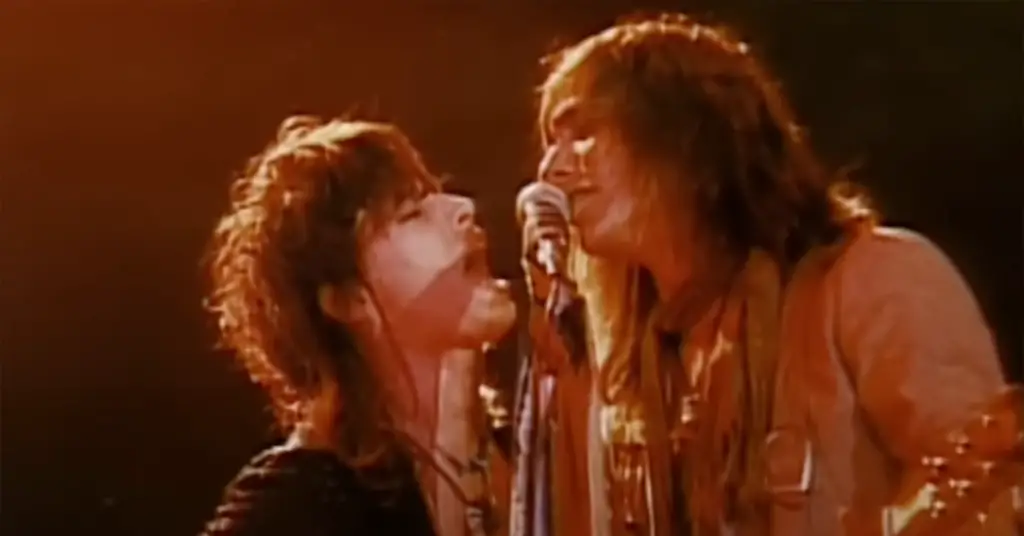Aerosmith – “Dream On”: A Power Ballad That Defined a Generation
Released in 1973 as the lead single from their self-titled debut album, “Dream On” is the song that built Aerosmith’s legacy. It wasn’t an immediate smash, but over time it grew into a timeless anthem of struggle, hope, and resilience — and arguably the greatest power ballad in rock history.
Written by a young Steven Tyler, “Dream On” captured a yearning that transcended rock stardom. It was a song about fighting for your place, about aging, identity, and the pursuit of meaning — all wrapped in soaring vocals, sweeping dynamics, and one unforgettable final scream.
The Sound: Classical Roots, Rock ‘n’ Roll Fire
Unlike the riff-heavy swagger that would later define Aerosmith hits like “Sweet Emotion” or “Walk This Way,” “Dream On” is rooted in melody and atmosphere.
The key musical ingredients:
- A haunting, classically influenced piano line, written by Tyler when he was still a teenager
- Joe Perry’s restrained yet emotive guitar work, building gradually to match the rising tension
- Slow, deliberate percussion and orchestral swells, giving the song an almost cinematic feel
- Steven Tyler’s iconic vocals, starting soft and smoky, ending in a crescendo of pure power
It’s not just a ballad — it’s a rock symphony, and it announced from the very beginning that Aerosmith had more to offer than bluesy bombast.
The Lyrics: Dreams, Time, and the Human Struggle
“Every time I look in the mirror / All these lines on my face getting clearer…”
The opening line is striking, especially coming from a 24-year-old Steven Tyler. Rather than romanticize youth or rebellion, he sings with the voice of an old soul — reflecting on mortality, dreams, and the relentless passage of time.
“Sing with me, sing for the year / Sing for the laughter, sing for the tear…”
These lines became an anthem for anyone holding on to hope in a world full of uncertainty. Tyler later said the lyrics were about “the hunger to be somebody” — a deeply personal reflection on his own ambition, fear, and artistic drive.
By the time he lets out the final scream — a primal, soaring wail that’s become one of rock’s most legendary vocal moments — it’s not just about the dream anymore. It’s about survival.
The Rise: A Song That Took Its Time
When it was first released in 1973, “Dream On” was a modest hit, peaking at #59 on the Billboard Hot 100. But Aerosmith kept touring, kept grinding, and kept building a fanbase.
Three years later, after the band had gained momentum, Columbia re-released the single in 1976 — and it finally hit #6, becoming their first major hit and cementing “Dream On” as a classic.
Since then, the song has:
- Been featured in countless films, TV shows, and commercials
- Become a staple of Aerosmith’s live shows, often closing their sets with emotional fire
- Inspired generations of artists across genres — from hard rock to hip-hop
- Been inducted into the Grammy Hall of Fame for its historical and musical significance
Legacy: The Heart of Aerosmith’s Identity
While Aerosmith has dozens of hits, “Dream On” remains the soul of the band. It’s the one song where everything — the grit, the ambition, the vulnerability, the sheer musical talent — comes together perfectly.
And perhaps that’s why, even now, 50 years later, it still resonates. Because everyone has a dream. And everyone knows what it feels like to chase it — sometimes blindly, sometimes desperately, but always with heart.
Final Thoughts
“Dream On” isn’t just a rock classic — it’s a monument to persistence, to growing older, to refusing to give up. It’s the voice of a young man facing the weight of his own ambitions and daring to believe that music could outlast time.
“Dream on, dream on, dream on…
Dream until your dreams come true.”
It’s not just a lyric. It’s a life philosophy — and Aerosmith’s eternal gift to rock and roll.



Facebook Comments